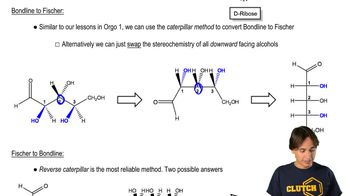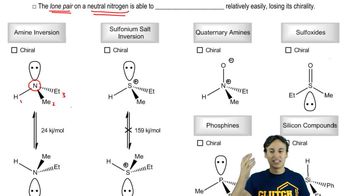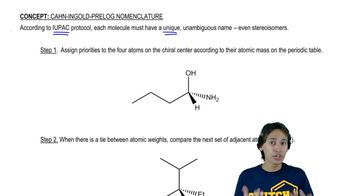Convert the Fischer projections into line-angle drawings and assign (R) and (S) at each chiral center.
(c)


 Verified step by step guidance
Verified step by step guidance Verified video answer for a similar problem:
Verified video answer for a similar problem:



 2:32m
2:32mMaster R and S rule for Fischer Projections. with a bite sized video explanation from Johnny
Start learning